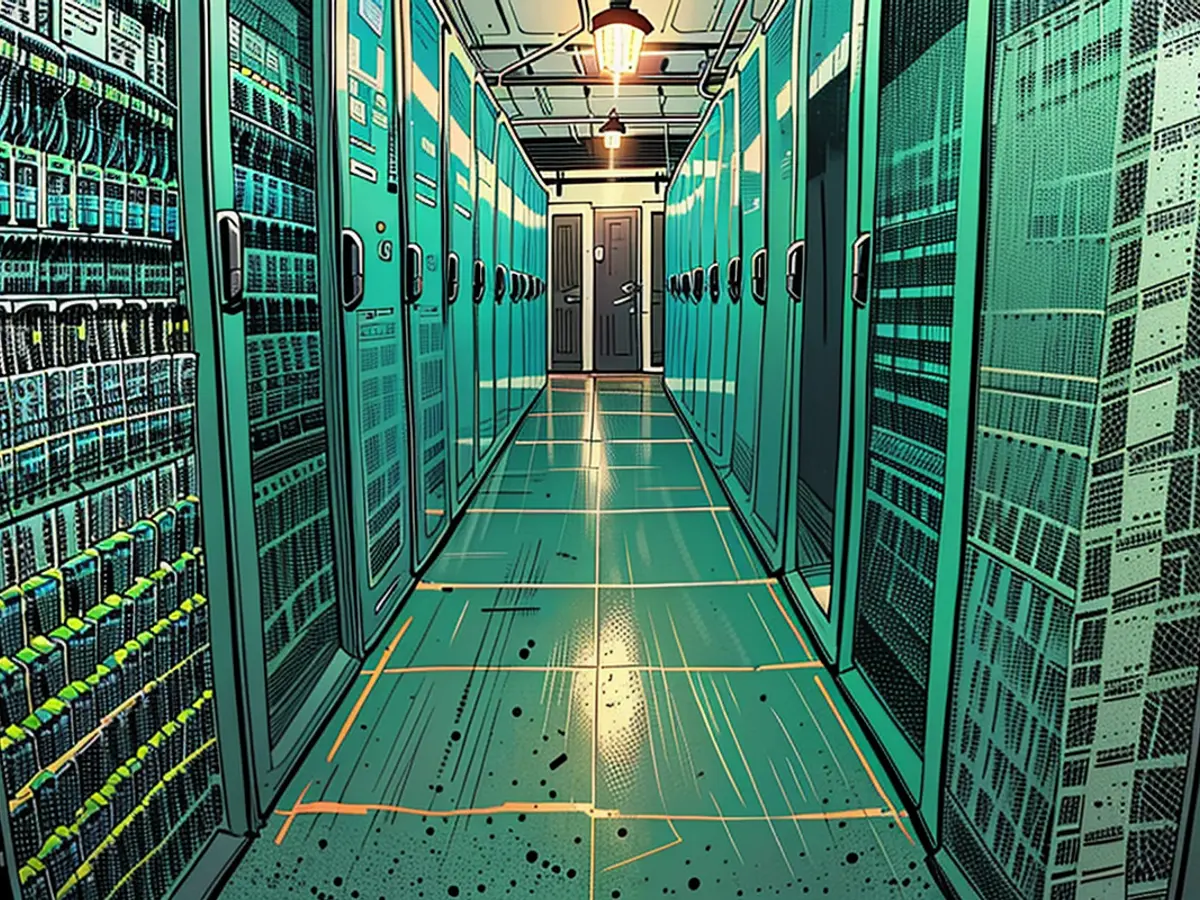The surge of AI could potentially jeopardize worldwide energy distribution.
Instead of aluminum factories or steel mills, it's data centers catering to artificial intelligence advancements that are poised to become the world's largest energy guzzlers in the near future. These digital powerhouses are devouring energy at rates comparable to entire nations. Energy crises are a real threat in certain regions.
Loudoun County, Virginia, may not appear as the obvious candidate for a tech powerhouse at first glance, but it's home to Data Center Alley – the globe's largest concentration of data centers. Over 350 server farms are either operational or under construction here, sprawling across small towns surrounding Dulles Airport, covering an area larger than Berlin's Wannsee. A significant portion of global internet traffic passes through this hub, which has benefited from its close proximity to the Pentagon, favorable tax incentives, consistent climate, abundant cooling water from the Potomac River, and affordable electricity.
However, the future of this tech utopia is uncertain. Analysts at TD Cowen forecast that power supply shortages could develop in northern Virginia and other prominent cloud industry locations, such as parts of Ohio, within the next few years.
The energy demand surge is driven by the AI revolution. With giants like Google, Amazon, and Microsoft spurring advancements in generative AI, demand for data centers has skyrocketed like never before – and so has global energy consumption. A single data center of this caliber can consume as much energy as tens of thousands of households in the US. The first half of this year has already seen more power plants connected to the grid in the US than in over 20 years.
Looming power deficit
Data centers for AI development serve as the foundation and vulnerability of digital transformation. "The usage of chips in the AI economy will be restricted by where we build the data centers and secure the power," noted Daniel Golding, a former Google data center manager, in the British "Financial Times". "Eventually, the limitations of power grids will impact artificial intelligence."
The chip shortage has so far been the primary roadblock in limiting AI's growth. Tech giants are scrambling to obtain high-performance GPUs or are forced to wait for deliveries for months. Nvidia CEO Jensen Huang tried to reassure investors and developers last week by asserting that the supply of the latest AI superchips of the Blackwell generation is secured by "ample supply." However, the real bottleneck lies in electricity.
As the comparison below shows, a simple Google search consumes about 0.3 watt-hours, while a request to ChatGPT consumes around 2.9 watt-hours – ten times more. "The chip shortage may be past us," warned Tesla CEO Elon Musk earlier this year. "But the next challenge will be electricity. I think next year, we'll discover that there simply isn't enough power to run all those chips." Blackstone CEO Steve Schwarzman also expresses concern: "There's a stampede to acquire free land to build AI data centers, with investment sums that are stupefying. I've never seen anything like it."
Currently, there are over 8,000 data centers worldwide, with the US hosting a third, Europe accounting for one-sixth, and China making up one-tenth, according to the International Energy Agency (IEA). The IEA estimates that global energy consumption by these power-hungry facilities will more than double by 2026, reaching over 1,000 terawatt-hours – roughly equaling Japan's annual electricity consumption. Additional electricity consumption could range between 160 and 590 terawatt-hours, necessitating the construction of an additional Sweden's worth of power plants or connecting an additional Germany to the grid at best, or worst-case scenario.
Today, data centers consume around 1.3% of the world's total electricity, which could increase to 3% by 2026. This level of energy consumption would make artificial intelligence development one of the most energy-intensive industries, on par with traditional heavy industry, with aluminum production accounting for approximately 4% of electricity generation.
Ireland on the brink of blackouts
Certain regions are already experiencing the consequences of AI's industrial growth. For example, data centers account for around a fifth of Ireland's national electricity consumption, a figure that could rise to a third within the next two years. In response, the local grid operator has temporarily halted new data center connections in the Dublin area.
The Dutch government has effectively banned new hyper-scale data centers since the beginning of the year, except in a few special cases. The physical implications of AI's industrial development are likely to become a politically contentious issue in the coming years. Residents in areas like Ashburn, Virginia, and Amsterdam will not be pleased if massive cooling halls suddenly appear in their neighborhoods. Moreover, the energy appetite of this new technology also poses a challenge to the climate objectives of tech companies and governments.
It remains uncertain whether the energy needs of AI centers can be met in the future, and with what technology. While Amazon Web Services (AWS) has long-term power supply contracts with a wind farm to support its Irish data centers, the company is working against the energy transition in Pennsylvania by expanding a data center near a nuclear power plant. There are even plans for a data center with its own miniature reactor in Sweden. Whether the AI boom becomes a boon or a threat to the energy transition depends on the progress of intelligent chips for artificial intelligence. The latest Blackwell generation from Nvidia is reported to consume 25 times less power.
In light of the projected energy demand surge due to the AI revolution, the Commission, recognizing the importance of addressing this issue, has already made a number of recommendations to manage the energy consumption of data centers, ensuring a sustainable future for digital transformation.
With the global energy consumption by data centers set to more than double by 2026, according to the International Energy Agency, it is essential for policymakers and tech companies to collaborate closely to devise strategies for meeting the energy needs of AI centers without compromising climate objectives or sparking resistance from local communities.








